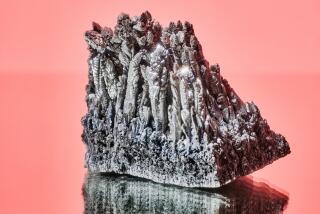An emblem of romance and an everlasting asset
DI-A-MOND: Native crystalline carbon that is the hardest known mineral, that is usually nearly colorless, that when transparent and free from flaws is highly valued as a precious stone, and that is used industrially especially as an abrasive; also: a piece of this substance
It’s just an allotrope of a common chemical agent, but ever since Emperor Maximilian gave Mary of Burgundy a diamond betrothal ring in 1477, nothing has glittered like the king of gems. (The shine is due to the mineral’s refractive power, but Mary probably didn’t think a lot about that when she showed off her rock at the bridal shower.)
The emperor revolutionized the business of getting engaged, setting off a trend that is responsible for much of a $37-billion industry. Credit must also be given to the famous and persistent “A Diamond Is Forever” marketing campaign invented in 1947 by De Beers, the international diamond conglomerate that recently settled a class-action lawsuit accusing it of monopolizing supplies and fixing prices.
Many diamonds vie for the title of most famous, including the 45.52-carat Hope, which resides at the Smithsonian Institution; the 69.42-carat Taylor-Burton, a pear-shaped rock from Cartier that Richard Burton gave Elizabeth Taylor; and the enormous Cullinan -- 3,106 carats when it was discovered in South Africa in 1905.
The Cullinan was cut into nine sizable stones, including the Star of Africa (a manageable 550.2 carats), which is mounted in the British Royal Scepter and on display in the Tower of London.
Whatever its size, “each diamond is completely unique in its own way,” says Vartan Kesheshian of Vartan’s Fine Jewelry in L.A. And each seems to be uniquely valued.
Consider a survey conducted by the consulting group NPD. It showed 63,000 people a pair of 3-carat diamond stud earrings and asked what they were worth. Told they were from a Wal-Mart store, participants fixed the value at $93. Told they were from Tiffany, the value swelled to $831.
Need help? Here’s a cheat sheet.
 Anatomy of a diamond and the four Cs
Anatomy of a diamond and the four Cs
More than 50 years ago, the Carlsbad, Calif.-based Gemological Institute of America developed the International Grading System for diamonds and the four Cs -- color, clarity, cut and carat weight. For more details, go to https://gia4cs.gia.edu/cm/four-cs-of-diamonds.htm.
Cut: A diamond’s shape, proportions, symmetry and polish are known in the trade as the “make.” If a diamond has a good make it will be brilliant, fiery and have “scintillation,” which means it creates a sense of movement and looks alive.
Color: A truly colorless diamond is rare and those with the least color are the most expensive. Diamonds within the normal color range usually have hints of yellow or brown. A diamond with “fine color” has little or none that you can see. (Some have rare “fancy” colors -- blue, pink, even pumpkin -- that are extremely expensive.)
Clarity: The vast majority of diamonds are not perfectly clear. They have internal and surface irregularities, called inclusions and blemishes, respectively. Grades range from “flawless” to “included.”
Carat: In weight, some diamonds are “magic sizes” -- a half-carat, a carat and so on. There’s only a sliver of a difference between a full carat gem and one that weighs in at 0.99 carat, but the price can vary significantly.
Source: Gemological Institute of America; Reporting by Leslie Earnest, Mark HaferPhoto credit: Rogel & Co., Inc.






